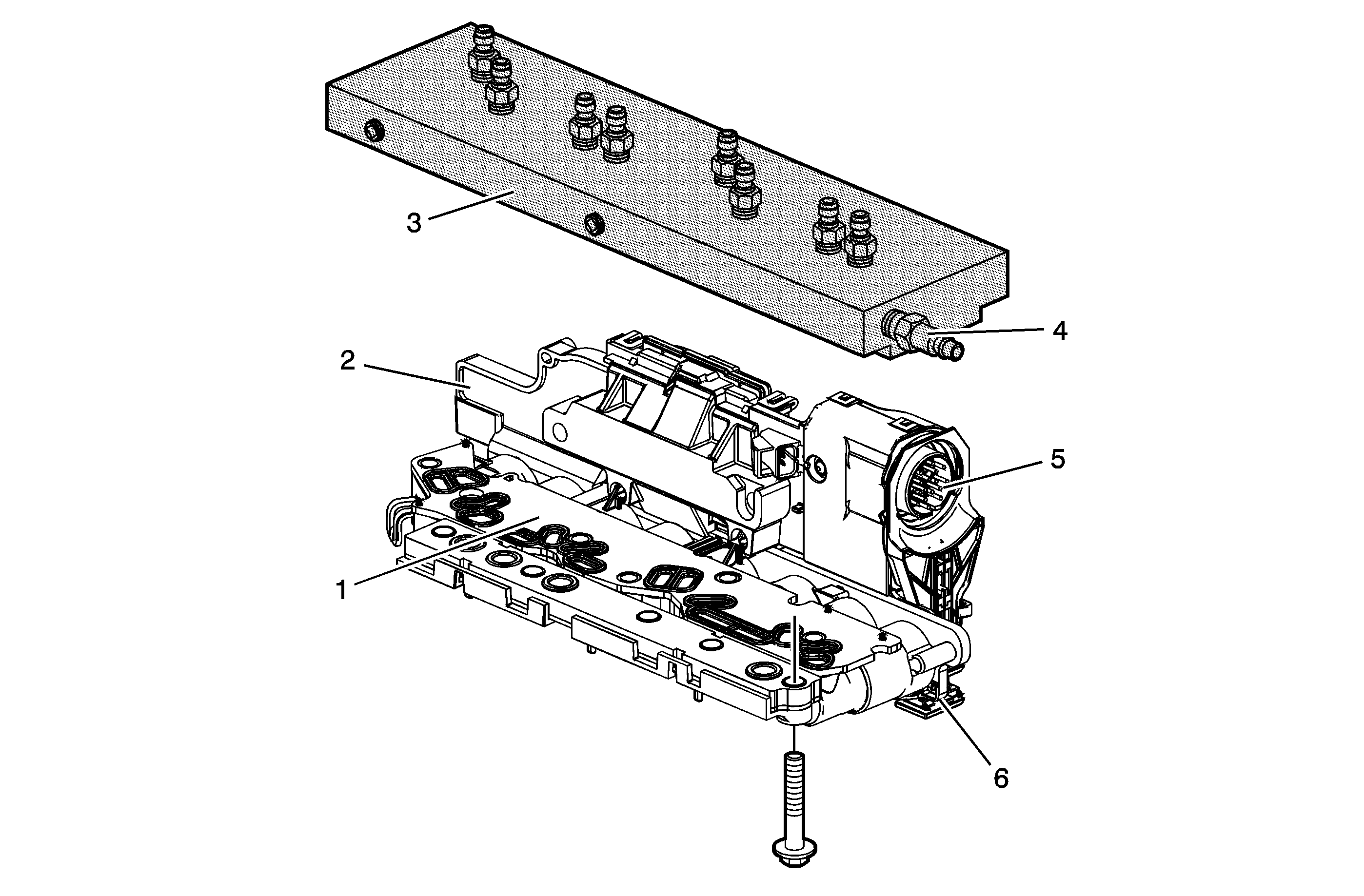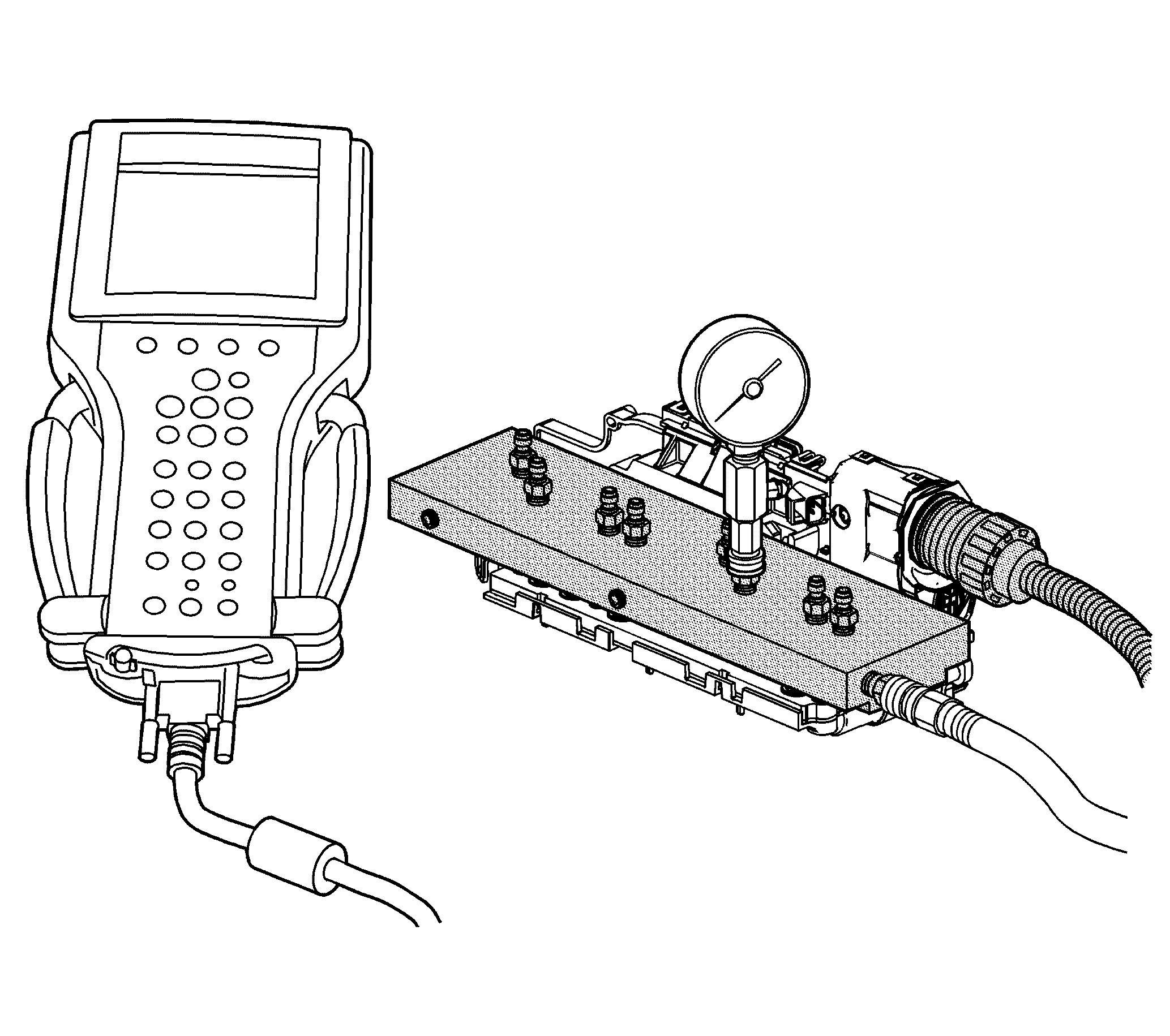Special Tools
DT-47825 Control Solenoid Test Plate

The purpose of this procedure is to test the functionality of the control solenoid (w/body and TCM) valve assembly solenoids for a gross stuck open or stuck closed condition. DT-47825 is bolted to the control solenoid (w/body and TCM) valve assembly on the valve body mounting surface. Pressurized air is passed into the aluminium test block, through the control solenoid (w/body and TCM) valve assembly solenoid passage and back to a pressure gauge on the test block. The pressure gauge indicates open if air pressure is passed through the solenoid, or closed if the solenoid is unable to pass air through. A scan tool is used to command the solenoids ON and OFF. While watching the pressure gauge, one can determine the valve functionality. The recommended shop air pressure for this test is 90-100 psi.
- Remove the control solenoid (w/body and TCM) valve assembly from the transmission.
- Bolt the DT-47825 to the control solenoid (w/body and TCM) valve assembly on the valve body mounting surface. Use the bolts and washers supplied with the tool to attach the test block. Tighten the bolts to 5 N·m (44 lb. in).
- Install the pressure gauge to the affected solenoid air port. Reference component to air port table.
- Connect the shop air pressure line to the DT-47825 air psi inlet port.
- Ignition ON, with a scan tool command the solenoid in question On and Off. Watch the air pressure gauge and look for the change in pressure as you command the valve On and Off. The valve should allow air pressure to flow through the valve port to the gauge with a result of pressure reading on the gauge. If the valve is stuck closed, no pressure change will occur. Command the solenoid valve On and Off several times to determine the state of the solenoid valve in question. Release the air pressure in the gauge between pressurization tests.

COMPONENT | PORT ON TEST BLOCK | Key On, Engine Off (KOEO) Normal State |
|---|---|---|
PC Solenoid 1 | G | No PSI flow to gauge |
PC Solenoid 2 | C | No PSI flow to gauge |
PC Solenoid 3 | A | Full PSI flow to gauge |
PC Solenoid 4 | B | No PSI flow to gauge |
PC Solenoid 5 | F | No PSI flow to gauge |
Shift Solenoid 1 | H | Full PSI flow to gauge |
Shift Solenoid 2 | D | No PSI flow to gauge |
TCC PC Solenoid | E | No PSI flow to gauge |
Important: With the key on engine off (KOEO), the TCM will normally cycle some of the transmission solenoids On and Off to facilitate keeping the ports and solenoids clean and free of debris. This dither function is a normal activity and will cause the valves to cycle open and closed quickly when the TCM is powered up. This can cause the psi gauge to flicker high and low as the valves open and close. This may cause some air to exit the ports where the psi gauge is not connected as those solenoids cycle on and off.
Drain the TCM of excess transmission fluid before attaching to test block and use caution when attaching air to test block air inlet.
